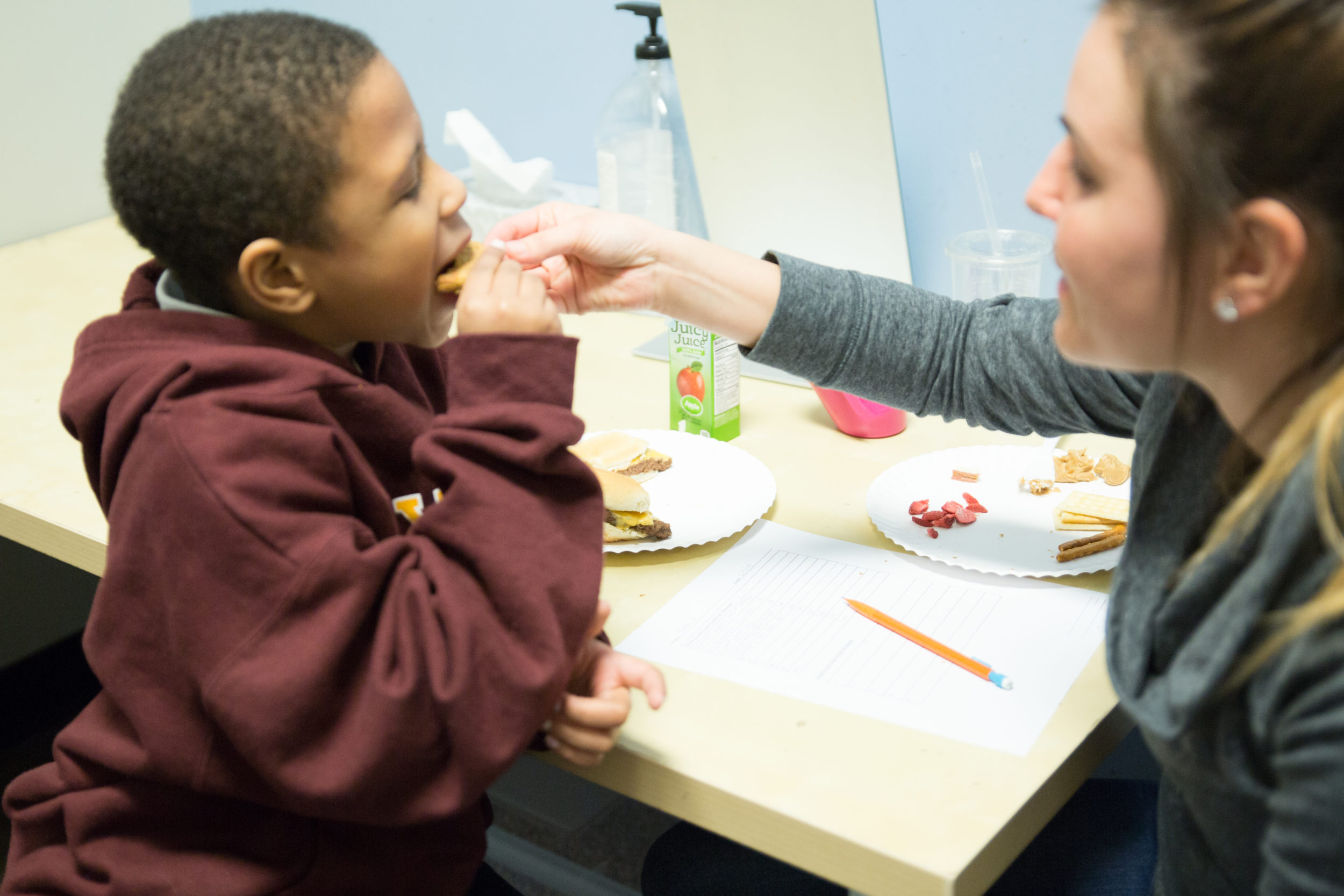Browsing the Path to Effective Feeding: Innovative Methods and Interventions for Efficient Feeding Treatment
Are you having a hard time to discover effective methods and interventions for successful feeding therapy? Look no more. This article will lead you through the course to success, supplying innovative methods to examine feeding obstacles and set attainable objectives. With evidence-based strategies, you'll find out just how to deal with sensory processing concerns and utilize assistive innovation and flexible tools. Plus, we'll show you the value of collaborating with families and caregivers for optimum feeding outcomes. Prepare yourself to browse the path to successful feeding!
Assessing Feeding Obstacles and Determining Goals
You must begin by examining your child's feeding difficulties and determining particular goals for their treatment. This action is important in establishing an efficient feeding treatment strategy. Begin by observing your youngster's feeding patterns and actions. Look for any difficulties or aversions they might have in the direction of particular foods or structures. Take note of any physical or sensory issues that may be affecting their capability to eat. Once you have actually recognized these difficulties, you can then set particular objectives for their therapy. These objectives need to be possible and realistic, concentrating on boosting your kid's feeding abilities and total nourishment. For instance, you may establish a goal for your child to be able to endure a broader variety of appearances or to self-feed with utensils. It is necessary to connect these goals with your youngster's feeding therapist so they can customize the therapy sessions to resolve these particular challenges. By assessing your youngster's feeding difficulties and establishing goals, you are taking the primary step towards aiding them develop effective feeding skills.
Carrying Out Evidence-Based Approaches for Feeding Therapy
Executing evidence-based approaches for feeding therapy can result in positive results for children. When you integrate these methods right into your youngster's treatment plan, you are making certain that the treatments made use of are sustained by scientific research and have been verified efficient. This technique raises the likelihood of success and helps deal with the certain feeding difficulties your youngster might be experiencing.
By complying with evidence-based methods, you can give your youngster with the most effective possible care and assistance. These methods may include using a range of sensory experiences throughout mealtimes, such as checking out different structures and tastes, to encourage acceptance of brand-new foods. In addition, implementing habits modification techniques can aid address choosy eating habits and advertise much healthier consuming patterns.
An additional essential aspect of evidence-based feeding treatment is including the household in the treatment procedure. By supplying education and learning and assistance to caregivers and moms and dads, they can play an energetic function in helping their youngster overcome feeding difficulties. This collaborative strategy improves the performance of treatment and advertises long lasting favorable changes in your youngster's consuming practices.

Dealing With Sensory Processing Issues in Feeding Treatment
Dealing with sensory handling issues in feeding therapy can be tough, yet it is vital for advertising a favorable consuming experience for youngsters. When you encounter a child with sensory handling troubles during mealtime, it is essential to understand that their responses to particular appearances, preferences, smells, or perhaps sounds are not deliberate (food therapist long island). By acknowledging and addressing these issues, you can aid develop a helpful atmosphere that motivates healthy and balanced consuming behaviors
This technique allows the kid to become familiar with the food and its sensory residential properties at their own speed. Additionally, using a variety of tastes and appearances can help desensitize their sensory system and increase their food preferences.
Engaging the youngster in sensory play activities can likewise be advantageous. Urge them to explore different appearances, such as squishing, pressing, or touching different food things. This can help normalize sensory input and decrease aversions to specific appearances.
Another essential facet is supplying a structured and calm eating environment. Lessen distractions, such as loud noises weblink or brilliant lights, which can bewilder their detects and hinder their ability to focus on consuming. Creating a predictable routine and utilizing visual routines can additionally aid the child feel even more protected and in control during nourishment.

Using Assistive Technology and Adaptive Equipment
Making use of assistive innovation and adaptive equipment can significantly improve the feeding experience for children with sensory handling problems. Mealtime can be challenging and overwhelming when you have trouble with sensory processing. With the right devices, you can make it a more delightful and successful experience.
One option is making use of specialized tools and plates created to accommodate your requirements. These utensils might have textured takes care of or a larger grasp, making them much easier to hold and manipulate. Plates with divided sections can help separate various foods and prevent them from touching, which can be a source of pain for some children.
In addition to specialized plates and tools, there are likewise assistive gadgets that can be made use of during feeding. A weighted vest or lap pad can give deep pressure input, aiding to calm and regulate your sensory system. A shaking toothbrush or chewable jewelry can give dental sensory stimulation, making the act of eating more enjoyable.
Innovation can also play a role in boosting the feeding experience. There are apps and tools available that can supply auditory or visual hints, such as timers or motivates, to assist you stay focused and organized throughout nourishment.
Collaborating With Families and Caregivers for Successful Feeding End Results
When teaming up with caretakers and households, you can interact to develop a caring and helpful atmosphere for effective feeding end results. By entailing families and caretakers in the feeding treatment procedure, you can acquire valuable insights right into the child's feeding difficulties, routines, and choices. food therapist farmingdale. This collaboration permits a holistic strategy to feeding therapy, dealing with not just the physical facets yet likewise the emotional and psychological factors that may impact a kid's feeding capacities
One key element of teaming up with family members and caretakers is supplying education and training. By equipping them with expertise and abilities, they can actively get involved in the feeding treatment process and sustain the child's development outside of treatment sessions. This can include instructing them feeding strategies, techniques for handling mealtime habits, and understanding the relevance of consistency and routine in developing healthy eating behaviors.
Moreover, including families and caregivers in setting goal and treatment planning makes sure that their viewpoints and goals for the child are taken right into factor to consider. By interacting, you can create attainable and realistic goals that line up with the family members's worths and concerns - food therapist long island. This collective technique fosters a feeling of ownership and empowerment, developing a solid structure for effective feeding end results
Furthermore, open and regular communication with caretakers and family members is necessary for reliable cooperation. By preserving recurring discussion, you can address issues, offer assistance, and make needed modifications to the feeding treatment strategy as required. This interaction also allows for sharing progress updates, celebrating accomplishments, web link and identifying any article kind of challenges or barriers that might emerge.

Final Thought
You have explored various methods and treatments for effective feeding treatment, such as assessing difficulties, applying evidence-based strategies, attending to sensory handling issues, and using assistive innovation. Keep in mind to always remain ingenious and proactive in your method to feeding therapy.
It's vital to interact these objectives with your youngster's feeding therapist so they can tailor the treatment sessions to address these particular difficulties.Applying evidence-based techniques for feeding therapy can lead to favorable end results for children.Attending to sensory handling concerns in feeding treatment can be tough, but it is crucial for promoting a positive consuming experience for children. By involving families and caregivers in the feeding therapy procedure, you can acquire important understandings right into the kid's feeding difficulties, choices, and routines. By furnishing them with knowledge and skills, they can proactively take part in the feeding therapy process and sustain the youngster's progression outside of treatment sessions.